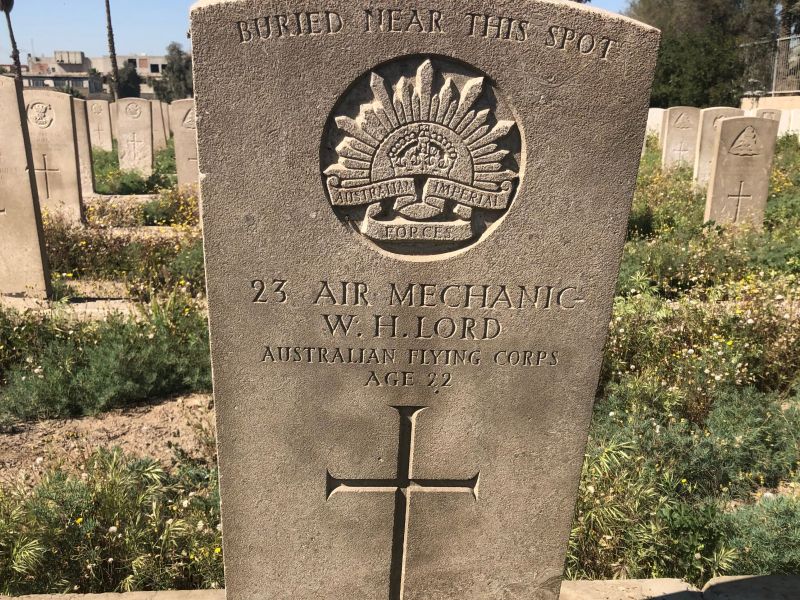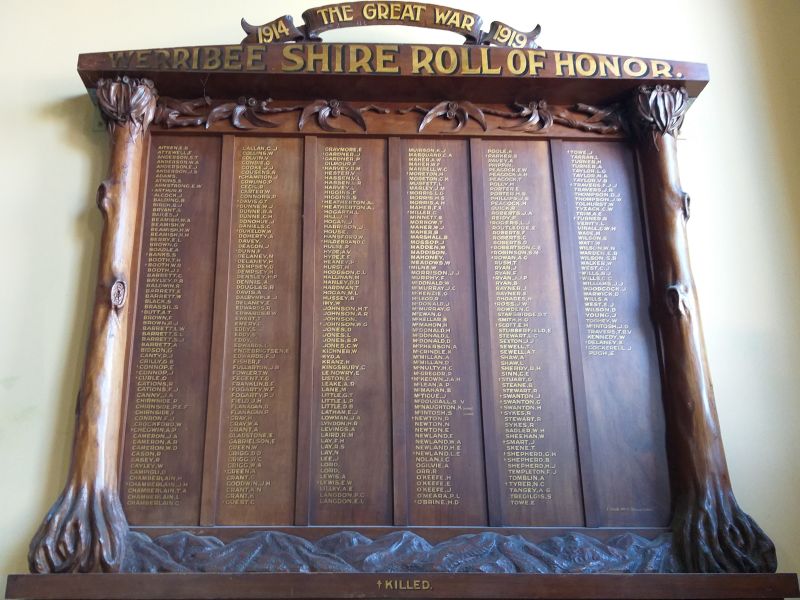Air Mechanic William Henry Lord, Australian Flying Corps
William Lord, known as “Will”, and his twin brother Hector were born in 1894 in Fitzroy North, the last of four children born to William and Deliah Lord.
The boys grew up in Footscray and attended the local Hyde Street State School.
After leaving school, Will went to work as a brass-moulder; Hector as a motor mechanic. The pair were serving as signallers in the 66th Infantry Regiment when the First World War began in August 1914.
In 1915 Will’s parents moved to Point Cook; his father became caretaker of the Central Flying School while his mother managed the cooking and the officers’ mess tent.
When news of the raising of the Mesopotamian Half-Flight was announced, Will and Hector were among the first to enlist at Point Cook on 30 March 1915. They were eagerly taken on strength as the unit’s adjutant, Thomas White already knew the boys, who were well regarded at the camp. When the unit’s complement was completed, it consisted of four officers and 41 other ranks.
In April, just prior to embarkation Will married Miss Annie Hogan who was expecting a child. A son Brian was born in June.
The Mesopotamian Half Flight embarked from Melbourne on 20 April 1915 aboard the transport ship Morea. After a stop at Bombay, the unit disembarked in Basra, in Ottoman-controlled Iraq, in late May.
Pilots and ground crew were soon busy as the Anglo-Indian force led by Major General Charles Townshend advanced. When Amarah was captured in June, the Half Flight was moved there. In August the Half Flight was incorporated into No. 30 Squadron of the Royal Flying Corps.
Continuing the advance, Townshend’s force captured Kut in late September, inflicting heavy casualties on the Ottoman force. William was among the men from the Half Flight who moved to Kut soon afterwards. His brother Hector and other members appear to have remained in Amarah.
On 21 November, Townshend’s force was checked at the battle of Ctesiphon and was forced to withdraw to Kut. They were pursued by the Ottomans who, by early December had surrounded and besieged Kut. Several disastrous attempts were made to relieve Kut, but the Ottoman defences were too strong and these efforts were repulsed with heavy losses.
After a siege lasting 147 days, Townshend surrendered his garrison of some 13,000 men, many of whom were starving and sick. Among the prisoners were nine Australians, including William Lord.
The men were separated from their officers, formed into columns and force marched more than 1,000 kilometres into Anatolia. Tied together and harassed by hostile Bedouin tribes along the way, they were robbed or were forced to trade their possessions for food. Prisoners who fell out due to illness or exhaustion were left by the roadside. Only two of the nine Australians taken prisoner survived the march and the war.
Lord made it as far as Adana, a journey of over 1,400 kilometres, when his health finally gave out. He was admitted to the American-run hospital at Tarsus where he died most likely due to malaria, around 13 July 1916. He was 22 years old.
Initially buried in the hospital cemetery alongside Australians Francis Adams and Charles Smith, their remains were recovered after the First World War and reinterred in the Baghdad (North Gate) War Cemetery.
Hector survived the war and returned to Australia in 1919.
- AWM Honour Roll https://www.awm.gov.au/collection/R1639026

 Australian War Memorial
Australian War Memorial